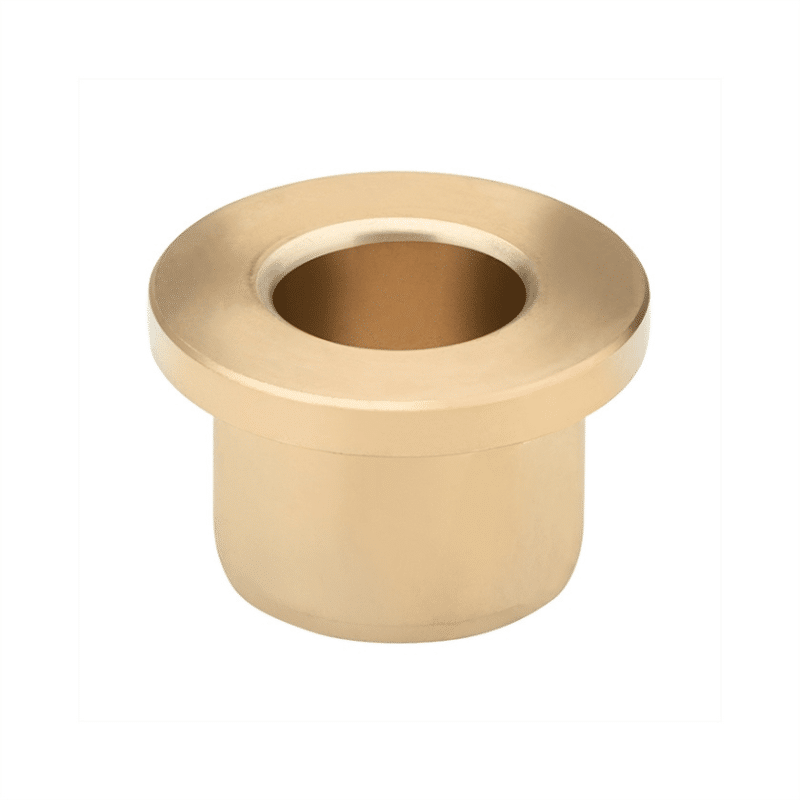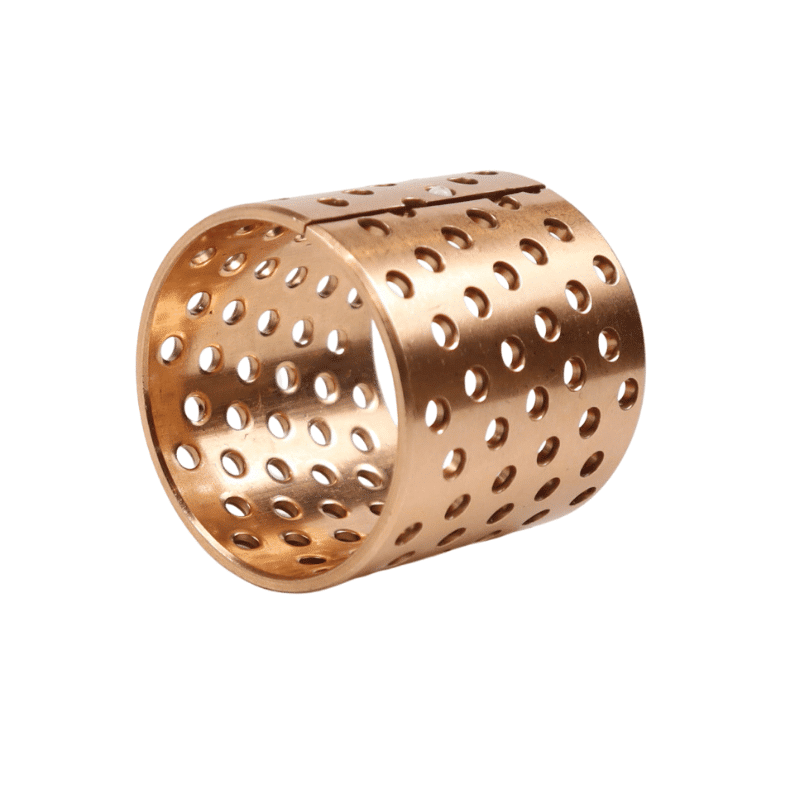Spherical bearings bronze rod end
Spherical bearings bronze rod end
Say goodbye to the hassle of frequent lubrication maintenance. Our self-lubricating technology ensures smooth operation and reduces wear and tear, extending the lifespan of your equipment. Experience uninterrupted productivity and cost savings as you bid farewell to the need for messy lubricants and time-consuming upkeep.
Manufacturing on Demand, alternative solutions
Spherical bearings bronze rod end
Spherical bearings made from bearing bronze, specifically SAE 660 or C93200, are well-regarded in various applications, including hydraulics. This alloy is a high-leaded tin bronze known for its excellent mechanical properties and suitability for bearing applications.
Hydraulic cylinders often require robust rod end connections to facilitate movement and load transfer. Bronze rod ends are a popular choice due to their durability and resistance to wear, making them suitable for various applications in hydraulic systems.
Spherical Plain Bearings: Many rod ends incorporate spherical plain bearings, which allow for angular misalignment and are often regreasable. This feature is crucial for maintaining performance over time, especially in heavy-duty applications
Advantages of Bronze Rod Ends
Durability: Known for its robustness, bronze excels in bearing high loads, making it a prime choice for hydraulic applications.
Corrosion Resistance: Bronze exhibits excellent resistance to corrosion, advantageous in settings exposed to moisture or chemicals.
Low Friction: Bronze’s smooth surface minimizes friction, boosting the performance of hydraulic systems.
Applications
Bronze rod ends are frequently utilized in:
- Construction Equipment: Essential for excavators and cranes that demand sturdy and dependable connections.
- Mining Equipment: Suitable for enduring heavy loads and severe conditions.
- Agricultural Machinery: Enhances the movement and control of hydraulic implements.
Conclusion
In choosing rod ends for hydraulic cylinders, bronze models offer a robust blend of strength, longevity, and minimal maintenance. They are widely applied across various sectors, facilitating reliable and efficient operation in challenging conditions.
When exploring spherical bearings made of bearing bronze, especially in the context of rod ends for hydraulic applications, it’s crucial to delve into their specifications, applications, and the materials used.
Overview of Spherical Bearings Made of Bearing Bronze Spherical bearings, also known as spherical plain bearings, are engineered to accommodate rotational movement and alignment discrepancies between connected parts. These bearings are particularly beneficial in hydraulic systems, where they promote smooth operation and allow for alignment adjustments.
Key Features of Bearing Bronze Spherical Bearings
- Material Composition: Bearing bronze, a copper-based alloy, is renowned for its superior wear resistance and low-friction characteristics. This makes it ideal for situations where lubrication is sporadic or where a maintenance-free setup is preferred.
- Design Variants:
- Maintenance-Free: These typically include a PTFE sliding layer to reduce friction and eliminate the need for regular lubrication.
- Lubricated Types: Some models are designed to accept periodic lubrication, enhancing their performance and longevity.
- Load Capacity: The load capacities of spherical bearings can vary greatly depending on their size and material. Manufacturers offer dimension tables detailing the static and dynamic load capacities for different models, essential for choosing the right bearing for specific applications.
Applications in Hydraulics Bearing bronze spherical bearings are extensively used across various hydraulic applications, valued for their robustness and misalignment capabilities. Common applications include:
- Linkage Connections: Utilized in lever systems where precise movement is essential.
- Hydraulic Cylinders: Spherical bearings in rod ends are crucial for connecting hydraulic cylinders to other components, facilitating necessary angular adjustments during operations.
- Pneumatics and Robotics: Their ability to support movement and handle heavy loads makes them suitable for pneumatic systems and robotic arms.
Choosing the Right Spherical Bearing Size When selecting a spherical bearing, consider:
- Bore Diameter: The inner diameter through which a shaft passes.
- Outside Diameter: The external diameter, influencing how the bearing fits into housings or other parts.
- Ball Width and Race Width: These dimensions affect the bearing’s load capacity and movement capabilities.
Manufacturers provide comprehensive dimension tables to aid in selecting the correct bearing size based on load requirements and specific application needs.
Conclusion Spherical bearings crafted from bearing bronze are indispensable in hydraulic systems, providing durability and flexibility. Their various design options accommodate different operational requirements, making them versatile for a broad range of industrial uses. Accurate selection based on manufacturer specifications for size and load capacity is critical to ensure optimal functionality.
| CODE | d | H7 | D1 | h6 | B | C | D | b | adjust the angle | bearing radial load | |
| JDBS-015 | 15 | +0.018 0 |
26 | 0 -0.013 |
12 | 9 | 22 | 4 | 8 | 6.5 | 0.5 |
| JDBS-020 | 20 | +0.021 0 |
32 | 0 -0.016 |
16 | 14 | 28 | “ | 4 | 12.6 | 1.4 |
| JDBS-025 | 25 | “ | 42 | “ | 21 | 18 | 36 | “ | 5 | 21.8 | 2.5 |
| JDBS-030 | 30 | “ | 50 | “ | 27 | 23 | 44 | “ | 6 | 32 | 3.5 |
| JDBS-035 | 35 | +0.025 0 |
55 | 0 -0.019 |
30 | 26 | 49 | “ | 5 | 43.7 | 4.8 |
| JDBS-040 | 40 | “ | 62 | “ | 33 | 28 | 55 | “ | 6 | 54.7 | 5.7 |
| JDBS-045 | 45 | “ | 72 | “ | 36 | 31 | 62 | “ | 5 | 69.7 | 7.2 |
| JDBS-050 | 50 | “ | 80 | “ | 42 | 36 | 70 | “ | “ | 92.4 | 10 |
| JDBS-060 | 60 | +0.030 0 |
100 | 0 -0.022 |
53 | 45 | 90 | “ | 6 | 143 | 16 |
| JDBS-070 | 70 | “ | 110 | “ | 58 | 50 | 99 | “ | 5 | 181 | 20 |
| JDBS-080 | 80 | “ | 130 | “ | 70 | 60 | 115 | “ | 6 | 254 | 30 |
| JDBS-090 | 90 | +0.035 0 |
140 | 0 -0.025 |
76 | 65 | 125 | “ | “ | 313 | 36 |
| JDBS-100 | 100 | “ | 160 | “ | 88 | 75 | 145 | 6 | “ | 544 | 64 |
| JDBS-110 | 110 | “ | 170 | “ | 93 | 80 | 155 | “ | 5 | 642 | 73 |
| JDBS-120 | 120 | “ | 190 | 0 -0.029 |
105 | 90 | 17 | “ | 6 | 797 | 94 |
| JDBS-130 | 130 | +0.040 0 |
200 | “ | 110 | 95 | 180 | “ | 5 | 880 | 105 |
| JDBS-140 | 140 | “ | 210 | “ | 90 | 70 | “ | “ | 7 | 668 | 56 |
| JDBS-150 | 150 | “ | 220 | “ | 120 | 105 | 200 | “ | 5 | 1135 | 129 |
| JDBS-160 | 160 | “ | 230 | “ | 105 | 80 | “ | “ | 8 | 891 | 73 |
| JDBS-180 | 180 | “ | 260 | 0 -0.032 |
105 | “ | 225 | “ | 6 | 1002 | 74 |
| JDBS-200 | 200 | +0.046 0 |
290 | “ | 130 | 100 | 250 | “ | 7 | 1434 | 117 |
| JDBS-220 | 220 | “ | 320 | 0 -0.036 |
135 | “ | 275 | “ | 8 | 1577 | 118 |
| JDBS-240 | 240 | “ | 340 | “ | 140 | “ | 300 | 9 | “ | 1720 | “ |
| JDBS-260 | 260 | +0.052 0 |
370 | “ | 150 | 110 | 325 | “ | 7 | 2072 | 143 |
| JDBS-280 | 280 | “ | 400 | “ | 155 | 120 | 350 | “ | 6 | 2455 | 172 |
| JDBS-300 | 300 | “ | 430 | 0 -0.040 |
165 | 120 | 375 | “ | 7 | 2630 | “ |
| How to order: Part No. d |
ASpherical bearings made from bearing bronze, specifically SAE 660 or C93200, are well-regarded in various applications, including hydraulics. This alloy is a high-leaded tin bronze known for its excellent mechanical properties and suitability for bearing applications.
Characteristics of SAE 660 (C93200) Bearing Bronze
- Composition: SAE 660 typically consists of:
- Copper (Cu): 81.0% – 85.0%
- Tin (Sn): 6.3% – 7.5%
- Lead (Pb): 6.0% – 8.0%
- Zinc (Zn): 2.0% – 4.0%
Additional elements include phosphorus, nickel, and iron in trace amounts
Applications
SAE 660 bearing bronze is widely used in various industries due to its robustness and versatility:
- Hydraulic Systems: Commonly used in hydraulic cylinders and rod ends where misalignment and rotational movement are required.
- Marine Applications: Its resistance to seawater makes it suitable for marine environments, particularly in pumps and valves
5
.
- Automotive and Aerospace: Used in components that require durability under high loads and variable conditions
34
.
Summary
Spherical bearings made from SAE 660 bearing bronze offer a combination of strength, wear resistance, and machinability, making them suitable for a range of applications in hydraulics and other industries. Their ability to perform well under various conditions while maintaining low friction properties makes them a preferred choice for many engineers and manufacturers.
.
Your expert in self-lubricating Bearing
and Bronze alloys – serving globally
Brand replacement products and functionally equivalent parts, alternative solutions
Manufactures flange bronze bearings, service & maintenance companies to meet the exacting specifications required in a wide range of industrial applications.
Machined bronze bushing that meet the exacting requirements & specifications supplied by our clients. Spherical bearings, spindles, semi-spheres and supports that we have manufactured.
You will find to follow a selection of self lubricating bronze bearing material CuSn7Zn4Pb7, CuSn12, CuAl10Fe5Ni5,
CuZn25Al5Mn4Fe3
Alternative solution,We offer an outsourced machining service for bronze bushes, manufacturing precise parts to the designs supplied to us by our clients.
Selection of other composite bushing material of self lubricating bearing that we have manufactured.
Wrapped Bronze Sleeve Bearing, Are you interested in our products?
Manufacturer of bimetal and steel bronze bushing parts according to client’s drawing.















